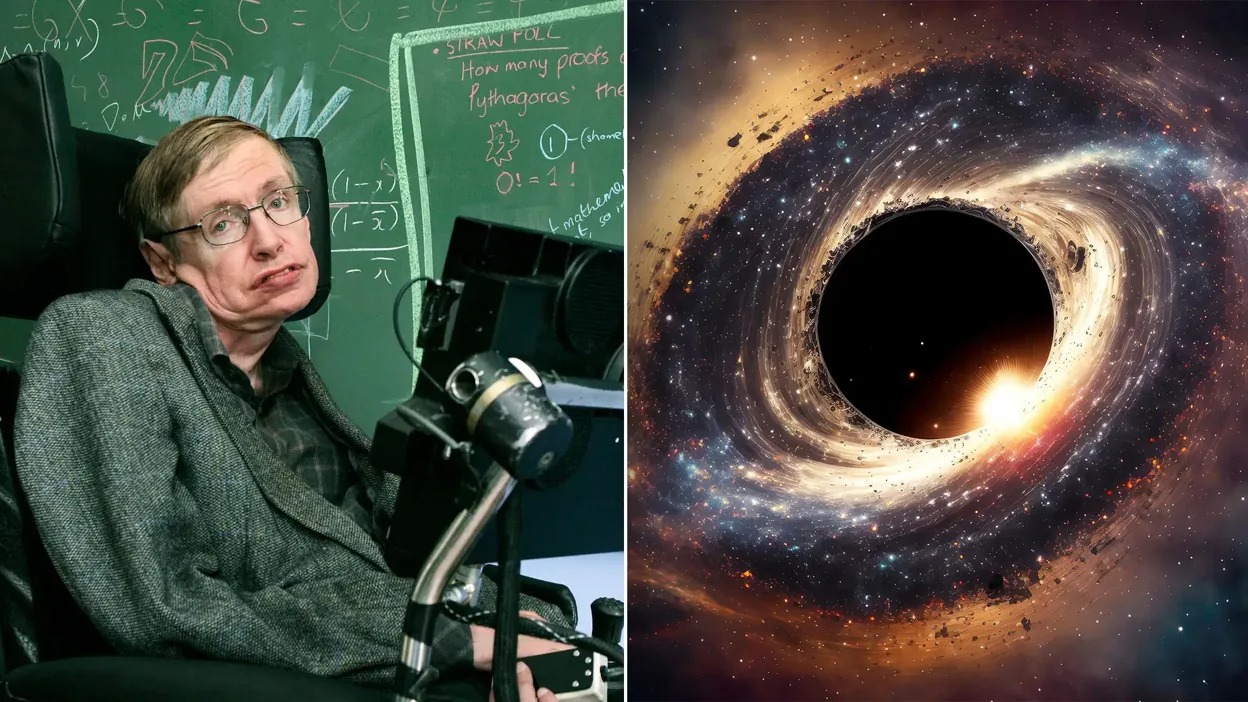Scientists have long been confused by one of the most dizzying mysteries in the Universe – the paradox of black holes. A new breakthrough study has revealed a new understanding of how information escapes from black holes, solving a decades-old problem that has puzzled even the most prominent physicists.

The study, published in the journal Physical Review Letters, sheds light on the mechanism by which black holes emit particles known as Hawking radiation. It reveals the crucial role played by quantum corrections to the external metric, or “quantum hair”.
What is Hawking radiation?
To understand this paradox, we have to go back to Stephen Hawking’s great idea in 1974. Hawking realized that black holes evaporated over time. Like a puddle of water on the Sun, the black hole will slowly shrink, particle by particle, until there is nothing left.
His discovery comes from quantum physics, which shows us that empty space is not really empty. Instead, a pair of so-called virtual particles are constantly emerging from the vacuum. These pairs usually stay together, except for a few that arise on both sides of the boundary of a black hole, which is called its event horizon. In this case, one member of the pair may be trapped in the horizon, and the other carries energy. Subsequently, this escape of energy reduces the black hole to nothing.
The only problem with this scenario is that if black holes can be destroyed, then all the information about what got into them can be destroyed. This is the paradox. For almost 50 years, physicists have been puzzled by this problem.
Black holes and “non-thermal” radiation
According to a recent study by physicists from the University of Sussex and the University of Michigan, the problem of the “black hole information paradox” has finally been solved. The study suggests that information may be hidden in the radiation surrounding black holes, which are also called “quantum hairs”, and that one day it will be possible to recover and reconstruct the history of these black holes.
The team used a tunneling method that took into account the perturbation of energy to show how quantum hairs impacted the quantum Hawking amplitude. The result is that the background or environment in which Hawking radiation occurs is influenced by quantum hair. This means that the evaporation of black holes is actually unitary. That is, the information cannot be lost, and the final state of the object may still contain hints about its beginning. In addition, the researchers revealed that adding a modification to Hawking’s calculations made the radiation “non-thermal” and, therefore, capable of carrying information.
This breakthrough can lead to a better understanding of how black holes behave and how they interact with the Universe around them.
Earlier we reported on what black holes were and how they appeared.
Follow us on Twitter to get the most interesting space news in time
https://twitter.com/ust_magazine
